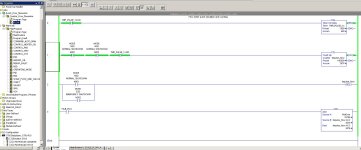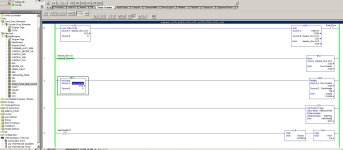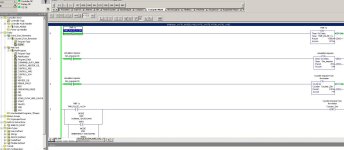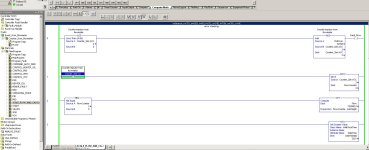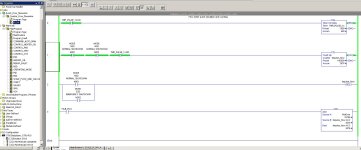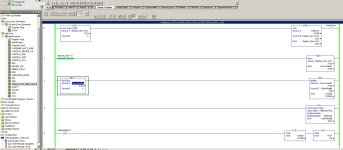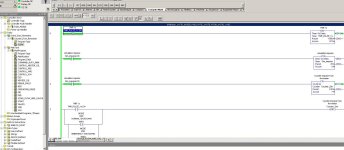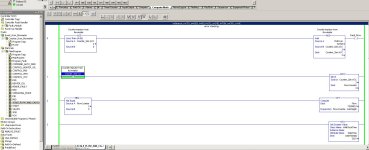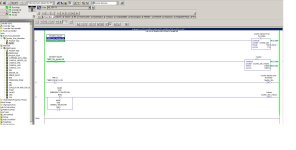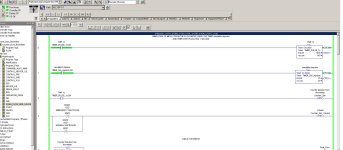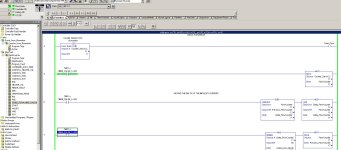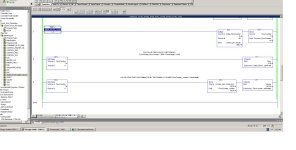I have posted this several times.
For any given homework assignment or task at work, you must consider these instructions as the customers specifications.
1. read the specifications several times.
2. write down your understanding of what you read in a step by step fashion.
3. review what you wrote down and see if it makes since, modify if necessary.
4. Get with the mechanical designer and discuss the project openly and honestly. When your opinions differ in regards to an operation, discuss it, don't ignore it.
there must be a reason for a difference of opinion. modify your instructions and i/o to accommodate the mechanical design if possible. Mechanical design may have to be changed due to plc programming limitations.
YOU BOTH MUST be in agreement on all points of operation before going to step 5. you may have to modify/rewrite step 2 and 3 based on the discussion.
5. step through your notes again this time, you are the one following the instructions. In other words, you are the plc. Write down on paper the events you are doing.
For example, turn on hydraulic motor 1, write down hydraulic motor 1 on. If a sensor is needed, write that down.
6. continue through the instructions. When you turn off the motor, mark a line thru it.
7. go through your instructions with all the sensors, motor aux. contacts, outputs documented. Modify if necessary.
8. repeat step 6 until no changes are made.
9. Try to group your data words into some organized fashion. The more programs you write, the more organized you become
10. write the plc program using your notes in a step by step manner.
10A Over half way through writing the program you WILL realize a different/better way of doing something you are almost done writing
(or a new spec will require it) and you will completely rewrite it
10B It WILL happen more than once.
Note: 10A and 10B added to list. thanks Aabeck, member plctalk.net forum
11. DOCUMENT EVERYTHING!!! You may remember things today, but in 5 years and hundreds of programs later, you won't
remember, especially at 2 am, so DOCUMENT EVERYTHING. use easy to understand tags and rung comments.
12. MAINTENANCE is your best friend and your worst enemy.
if you work with them and find out what they can do, write the program where they can trouble shoot the program. they will be able to fix the problem and everyone will be happy.
BUT
if you write the program to where you are the only one who understands what is going on, maintenance can't fix the issue, the machine is down, production is down,
management hears about it, your boss hears about it, then you hear about it - rewrite the program or else. you get calls all hours of the day and night.
this still holds true, a machine can cost a billion dollars, but it's not worth 10 cents if maintenance cannot trouble shoot the issue and fix the issue.
everyone has their own style of programming and you must develop your own way as well.
13. when the customer is in your shop and brings maintenance, discuss things with them, let them see your code, be open.
if they make suggestions, write them down, don't ignore them. their ideas may save you days of programming.
14. install the program and leave in program mode if possible so you can to debug your i/o
15. when writing your instruction manual(s), use your notes from step 9. Use easy to understand English language. specify the i/o, timers, counters, outputs when possible.
this will help maintenance even more to see what is going on.
16. Question for you, when is a machine and plc the most dangerous and why?
When it’s first powered on – when power is first applied to a machine, you don’t know how things are wired.
When you energize the plc outputs, you don’t know how they are wired.
When the plc is put into run mode the first time, it will do what you told it to do, NOT what you wanted it to do.
17. debug the program.
Remember, the program will always do what you told it to do, NOT what you wanted it to do.
18. IF you can ask a what if this happens type of question, YOU MUST have an answer, EVEN IF its a 1 in a million chance. that what if situation will happen in the first 30 minutes of production runoff in front of the customer.
regards,
james




